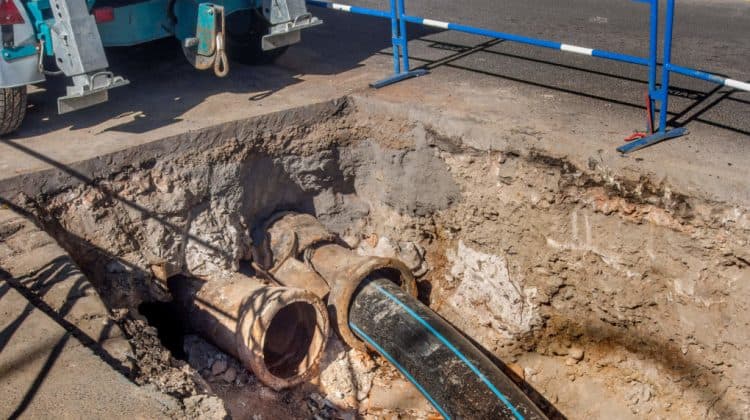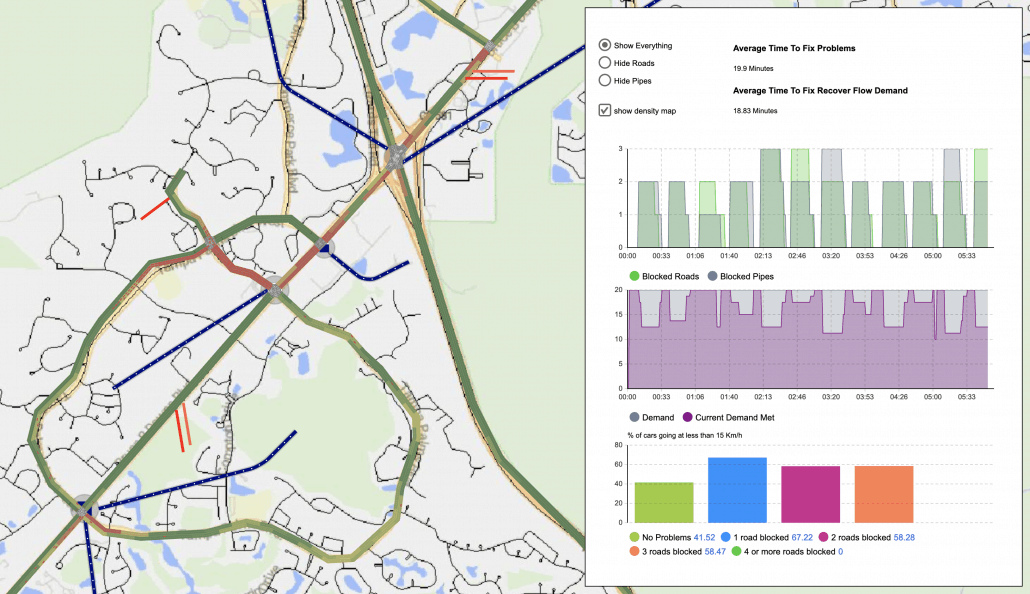
- Client :Sai K.
- Category :Agent-Based, Fluid Library, Road Traffic Library
- Project Url :
- Date :June 14, 2019
Challenge
In some cities, the water that is consumed in homes is transported through pipes from the reservoirs and stored in different tanks on the way to redistribute to neighborhoods. These pipes are present below streets where vehicle traffic flows, meaning that if a road has problems and requires fixing, it will affect the pipes below it, requiring a redistribution of the water through different pipes, hence affecting demand. On the opposite side, a pipe or tank can have problems, in which case the repairing activities can severely affect road traffic, generating huge congestions and reroutings to avoid areas where repairing is being done.
The project’s objective was to analyze where the most breakdowns occur, if breakdowns occur at multiple locations at the same time, and the implications of those problems into traffic and water supply.
Solution
A model was built in AnyLogic using the fluid library and the road traffic library along with Agent-Based. This hybrid model allowed to visualize the state of the network in time with congestion information, breakdown information and fixing timings as seen in the following figure.
Outcome
The outcome of this project was a ready to use Software that allowed the user to play around with the model in order to understand statistical elements with different inputs such as failures, traffic, water demand and supply, alternative routes, etc. This model was used as an initial initiative to start working in strategies to reduce water supply gaps and traffic congestions through better communication, faster arrivals to the problematic area for repairing, and faster problem fixing.
Project Features
- Industry: Road Traffic
- Model: Discrete-Events, Agent-Based
- Duration: 1 month
